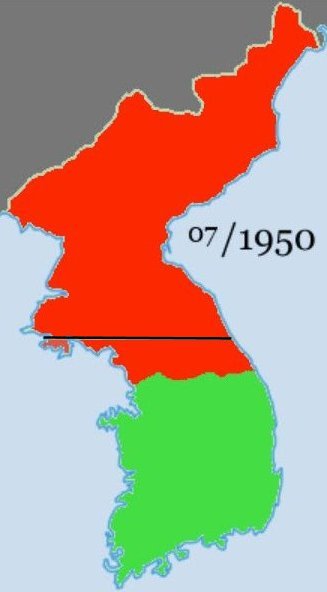
|
Korean War Time Line June 1950 to July 1953 2. Position of Forces in July 1950
In contrast, the ROK Army defenders were vastly unprepared, and the political
establishment in the south, while well aware of the threat from the north, were
unable to convince American administrators of the reality of the threat. In
South to the Naktong, North to the Yalu (1961), R.E. Appleman reports the ROK
forces' low combat readiness as of 25 June 1950. The ROK Army had 98,000
soldiers (65,000 combat, 33,000 support), no tanks (they had been requested
from the US military, but requests were denied), and a 22-piece air force
comprising 12 liaison-type and 10 AT6 advanced-trainer airplanes. There were no
large foreign military garrisons in Korea at invasion time, but there were
large US garrisons and air forces in Japan.
Back to Korean War Time Line June 1950 to July 1953 - Page 1 |